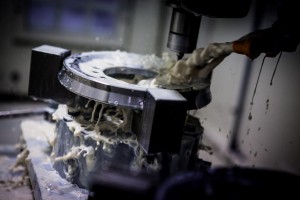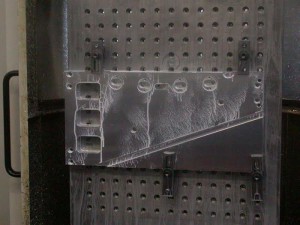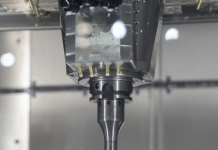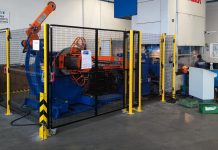 Efficiency is essential for any productive process. In stock removal machining, a relevant efficiency is essential for any productive aid comes from the coolant management.
Efficiency is essential for any productive process. In stock removal machining, a relevant efficiency is essential for any productive aid comes from the coolant management.
In any stock removal machining, the lubricating oil plays a key role. Important is choosing the most suitable one
but it is also essential to make it operate in optimal way, to maximise efficiency and efficacy. With evident benefits
on process costs. Allowing the coolant to operate with its best performances means to reach a very performing process, with extension of tool service life, better surface quality, reduction of maintenance interventions and decrease of the
cutting fluid. These benefits might be completed by the addition of other not negligible aspects but with a less
direct repercussion on the process, like the disposal of worn-out parts (with relative cost, depending on the way
the waste is catalogued), the machine protection and the health of entrusted workers.
Target: performance improvement
Lubricating fluids play an essential role in the machine tool protection. The fluid cleaning has been almost
universally identified as the problem core and, with it, filtering. Actually, it is precisely the filtering, for a long time
neglected or underestimated, the cause of more or less serious inefficiencies.
Outstanding research centres are studying the answer, in terms of global performances, given by standard filtering systems and the so-called advanced systems. The microscopic analysis of whatever sludge highlights the particles with 8÷20 µm sizes that, mixed with a pressurized emulsion, cause an abrasive flow that damages tools and machined surfaces, eventually obstructing the coolant passage holes and, in the long term, even damaging the
machine tool. In case of high pressure machining, the phenomenon obviously becomes more serious.
According to researches carried out on a world scale, the filtering matter is encompassed in the sizes of what we
filter, that is to say in the 8÷20 µm value and, in particular, in the constant filtering value and not only in the
average one, which must be inferior to 10µm on the single passage. This datum gains more importance when we
are executing high-performance machining.

Conventional systems, which are currently the most diffused and are low-cost ones, are based on filtering
elements that must be periodically replaced or cleaned, or on filtering papers that must be instead disposed, or on
mechanical separation systems with moving parts. These systems show a trend characterized by peaks, typical of
mechanical systems, progressively destined to collect dirtiness, which represents a situation of gradual cleaning-
obstruction type. In these cases, in fact, almost paradoxically, the growing filth increases efficiency but, at a certain
stage, the filtering is so effective and so strong that the whole system jams, until a maintenance intervention is
carried out.
This situation does not occur with the most advanced systems. An example is represented by the systems based
on simple physical principles, like the combined action of the centrifugal and of Venturi effect, able to grant the
filtering constancy in time, even at levels under 10µm: the recirculated coolant will have a high cleanliness degree
that remains in time and the machining with tools will reach optimal efficiency levels.






